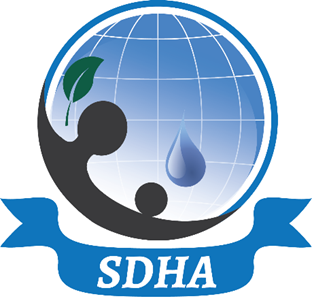

SDHA Theory of Change and Model root in its vision ‘’A world in which people have sustainable livelihoods and coping power to disasters and vulnerabilities for well-being and dignity;’’ then in its mission : ‘‘SDHA will contribute to sustainable development and human relief by means of environment and natural resource management, economic empowerment and humanitarian initiatives’’. The SDHA Theory of Change clearly shows the logic model, scope of interventions, and desired change at household and community levels in the working context.
- Theory of change and logic programs models
To materialize its vision and mission, SDHA set up what? and committed for its theory of change based on comprehensive and interconnected programs aiming at reducing poverty and human vulnerability and promoting social economic development.
To this end, SDHA multidimensional approach bases on Water security and sustainable environment, Community livelihoods and economic empowerment (Sustainable Agriculture, entrepreneurship and job creation), coupled with humanitarian and disasters relief to refugees and vulnerable groups. The four programs will be fueled by capacity development and knowledge management, which is the enabling component opened up for stakeholders’ engagement at different levels. All the programs will be backed by Action research which is pilot, innovation and demonstration actions executed at local level by and for communities in attempt to find adequate solution to identified problems. See VITAL concept. Action research is not only for bringing rapid change to our beneficiaries but also backing the national policy advocacy with tangible results and stories from the grassroots communities.
It is worthy to note that the four mentioned programs target vulnerable communities, specifically women and youth for ownership and effective participation.
- Inputs /outputs and overall goal
This Theory of change aims at making sustainable impact among SDHA stakeholders. Through a process of MEL (Monitoring, evaluation and learning), consultation and Knowledge management, the result (Impact) will be generated thanks to the combination of different inputs made of program execution namely community based actions and participation, youth and women empowerment action, demonstrations and innovations, stakeholder training among other interventions. These combined inputs will lead to our desired change (results) which is in different forms, namely, skills, incomes, employment, community resilience to climate change and welfare. The major impact will be sustainable livelihoods and human dignity for the beneficiaries which is the ultimate vision of SDHA.
